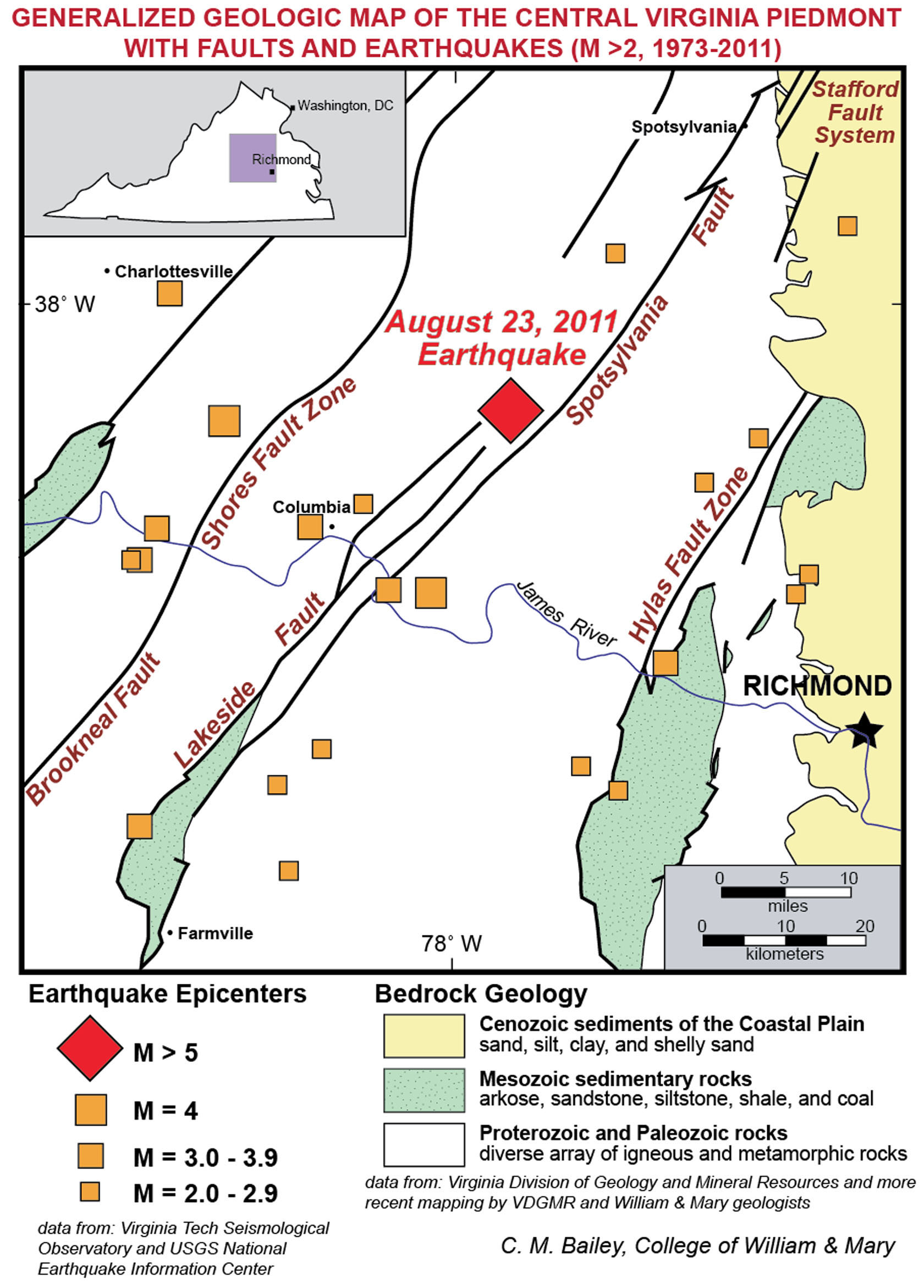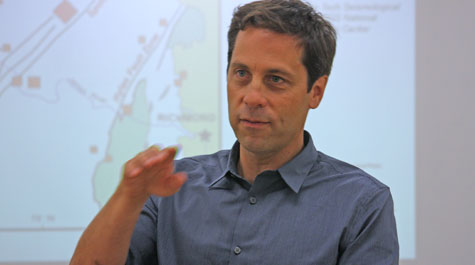Ancient faults still prove to be powerful
Remember?: On this day, Aug. 23, a powerful earthquake shook the East Coast of the U.S. It turned out to be a big one. William & Mary geologist Chuck Bailey was much in demand by the media following the quake. He is quoted again on the topic in a Washington Post story today. The quake registered 5.8 on the Richter scale and hit just as William & Mary’s Department of Geology was gathering for a faculty retreat, a coincidence that provided Bailey with his greatest straight line ever, as recounted in this story reprised from Aug. 24, 2011. If you believe in coincidences, you may want to fasten things down: The geologists have another retreat scheduled today. - Editor's note, Aug. 23, 2016.
When a 5.8 magnitude earthquake rocked the East Coast Tuesday, the William & Mary geology department was in the middle of a faculty retreat.
“Our discussion was interrupted,” Department Chair Chuck Bailey said, “by a motion from the floor.”
All joking aside, even the experts didn’t realize what was going on at first.
“We thought it was construction,” Chancellor Professor of Geology Heather Macdonald said.
However, when the tremor continued for nearly 20 seconds the geologists realized they had a quake on their hands - a major quake. A 5.8 on the Richter scale is significant for the region.
According to reports, the earthquake occurred at 1:51 p.m. and was centered in Mineral, Va., which is about half way between Richmond and Charlottesville. Tremors were felt as far north as Maine.
Bailey, a structural geologist who teaches courses on Virginia geology, is particularly familiar with the area’s seismic activity. Following Tuesday’s event, his expertise was sought out by national and local media.
“This is a once-in-a-century earthquake, anyway you slice it”, Bailey told the Associated Press, adding that quakes of a similar magnitude were based on estimates and before monitoring equipment was available.
 This was the biggest event on the East Coast since we started using seismometers,” he noted to The Washington Post.
This was the biggest event on the East Coast since we started using seismometers,” he noted to The Washington Post.
Bailey explained that the Richter scale is not a linear progression. “So if you have a 5.3, it’s ten times stronger than a 4.3. But a 6.3 would be a hundred times stronger.”
Bailey also appeared on National Public Radio (NPR) and WHRV’s “HearSay with Cathy Lewis” on Aug. 24. A graphic he prepared on Virginia’s fault lines was featured on-air by NBC12 in Richmond, Va. Bailey did numerous on-air phone interviews including Ch. 13 (WVEC), Norfolk.
In a blog post recapping the day, Bailey noted, “We have much to learn about the stresses that cause faults to slip this far from modern tectonic plate boundaries (in this case at the Mid-Atlantic Ridge some 3,000 km from central Virginia) and the hazards that these old, but restless, faults pose. It’s why we do research at William & Mary.”
As of Wednesday afternoon, the quake was still the main topic of conversation on the Williamsburg campus.
At first, Ryan Hedlund ’14 thought the tremors were just a really loud bass system. He was in his dorm room when he heard a loud noise. Then, the tremors began.
“The TV was shaking, the bookcase was shaking, the walls were shaking, I was shaking,” Hedlund said.
But, he “didn’t really freak out until afterwards” because he did not think earthquakes happened in this area. He was, however, worried about his family in Northern Virginia, since he did not have cell phone service until 4 p.m., two hours after the first tremors.
Michael Kutner ’12 was in the middle of training for the Spotswood Society on the second floor of the Wren Building. He pointed out that the College’s historic building, though it has been through three fires, has been standing since 1699. “But still, I’d rather have been outside.”
Joe McClain, director of research communications, and Ameya Jammi '12 contributed to this report.
















